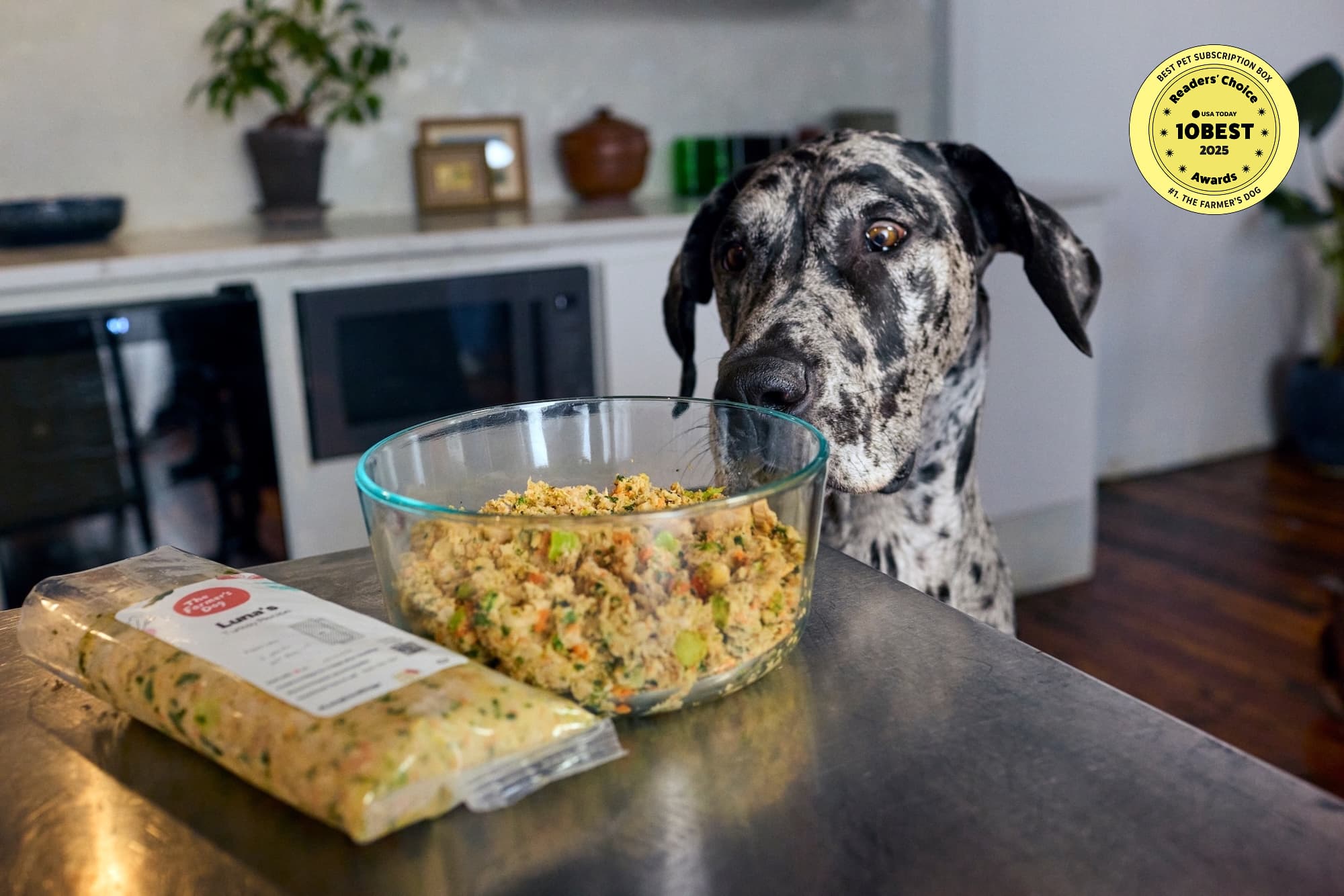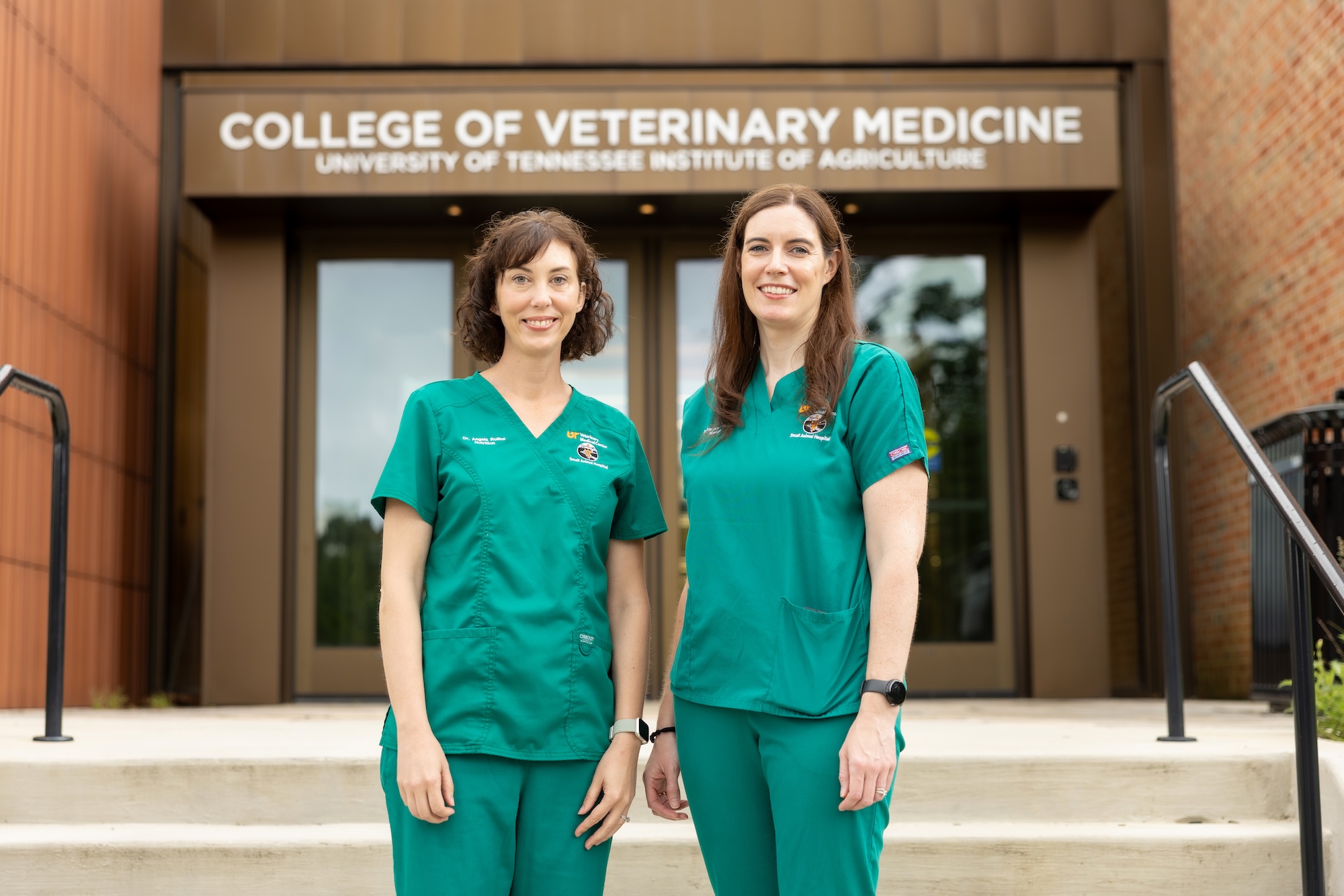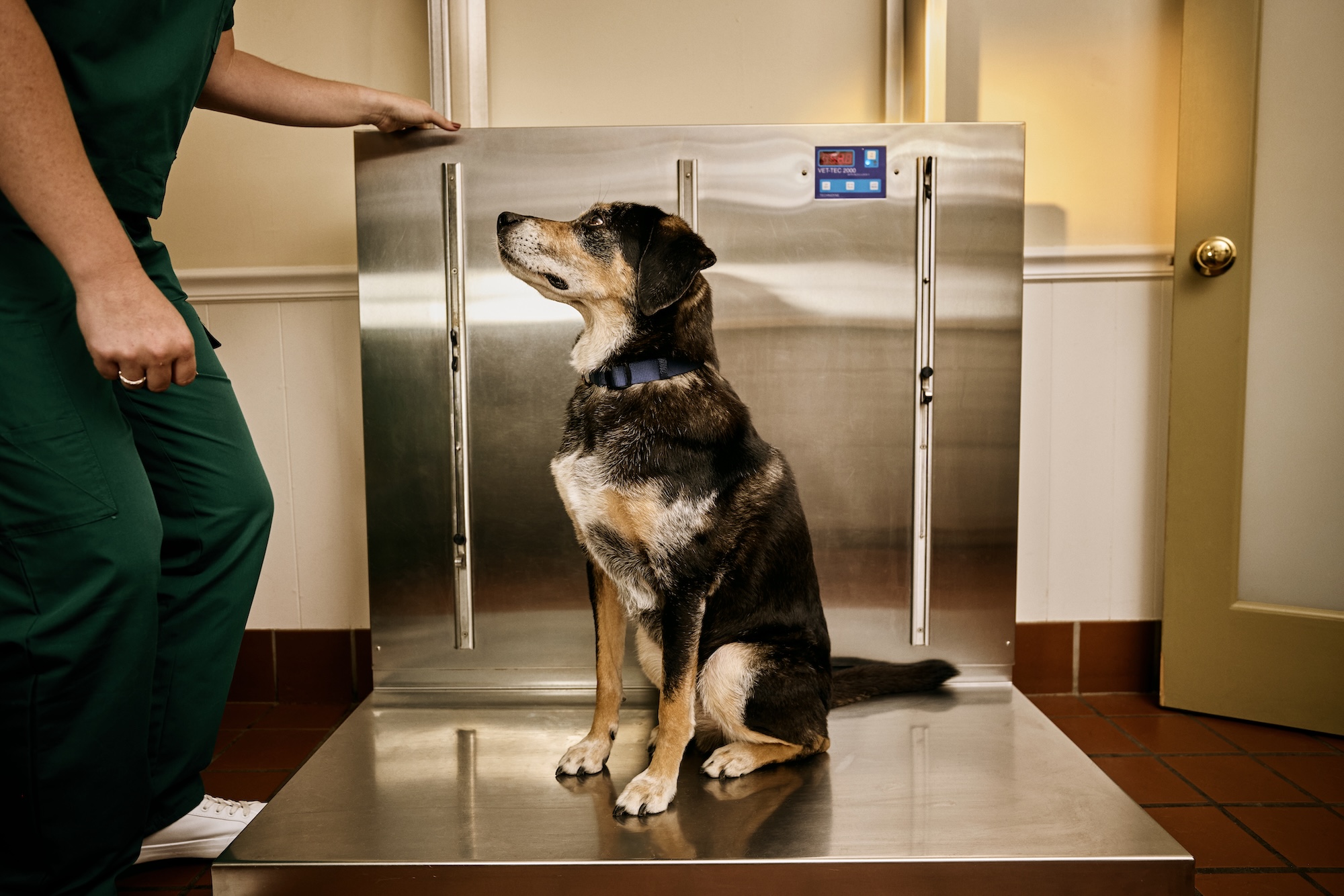This article was updated in April of 2025.
Dogs who switch from highly processed kibble to fresh food may experience renewed enthusiasm for eating, a shinier coat, and high-quality poops. Because our food is pre-portioned for each dog’s precise caloric needs, it also can make it easier to follow a weight-loss plan or maintain a healthy weight and good body condition—and research has shown that healthy-weight dogs can live up to 2.5 years longer than those who are overweight.
But even with the healthiest new diet, we recommend a gradual transition between foods. Some dogs transition with no issues at all. But for some, any change in diet can take some adjustment from their digestive system.
Here are more details on why a slow transition is best, plus pointers for pulling it off seamlessly.
How should I gradually change my dog’s diet?
If you’ve signed up for The Farmer’s Dog, we’ll send complete transition instructions in your first box. But, in short: You’ll start by feeding meals made up of 25% The Farmer’s Dog food and 75% your dog’s old food.
You’ll gradually increase the quantity of new food and decrease the old until you’re feeding 100% The Farmer’s Dog. We’ll provide day-by-day instructions for making this transition, but every dog is different—it’s okay if yours needs a little extra time.
From the beginning of the transition, establish a mealtime routine—don’t free-feed. Not only will this make transitioning easier and help you control your dog’s weight over the long run, it’s also much better from a food-safety standpoint. If your dog isn’t eating their food and it has been out of the fridge for 2 hours (1 hour in a room that’s above 90°F), we recommend following USDA guidelines and tossing it out to be as safe as possible—the same way you would with fresh food for yourself and your human family members. Don’t put the food back in the refrigerator—once it’s been out that long, re-cooling won’t make it safe again.
Is there anything I should watch out for during the transition period?
Some dogs have more sensitive stomachs than others—so, even if you do everything right during a transition, your pup may develop runnier-than-usual stools. Other dogs may experience an episode or two of vomiting. In either case, your dog should continue to drink normal amounts of water, still want to play, and have a good appetite. Loose stools typically resolve over a period of a few days as your dog’s digestive system adjusts to their new food. If your dog has ongoing or worsening loose stools, continues vomiting, is not interested in eating, or seems lethargic, contact your vet immediately.
Why gradually transition between foods?
A gradual transition between foods will be easiest on your dog’s digestive system. We understand the excitement to feed full meals of The Farmer’s Dog from day one—but even if your dog loves their new food from the first bite, we encourage you to stick with the transition schedule.
What do I need to do to prepare for a transition?
Make sure that you have enough of your dog’s new and old food; you should have an adequate supply of your dog’s old food on hand when your first box of The Farmer’s Dog arrives.
You’ll also need to clear some freezer space, and defrost each pack before you use it. To defrost The Farmer’s Dog food, just remove it from the freezer and put it into the refrigerator 12 hours before you want to feed it to your dog. Once thawed, the packs should keep safely in the fridge for up to four days.
Everything else you’ll need to know will be in their box.
Is this a lot of work?
Transitioning to fresh food is usually pretty easy, and a healthy diet can yield a lifetime of benefits for your dog. It’s well worth it. If you have any questions about transitioning your dog to their fresh-food plan from The Farmer’s Dog, get in touch with our customer experience folks. Log into your account for more tips, and to make any necessary changes to your dog’s plan. And if you have any concerns about your dog’s digestive health, call your veterinarian.




